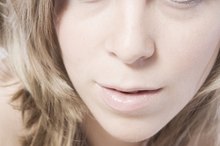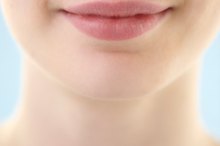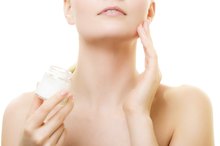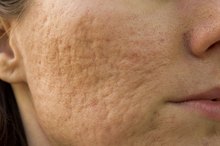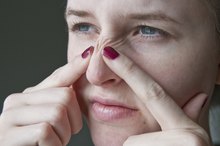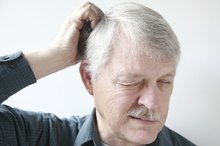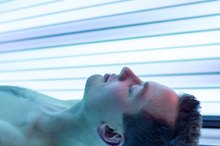Salicylic Acid for Rosacea
The National Rosacea Society estimates that while 16 million Americans suffer from rosacea, many know little to nothing about it 1. Its symptoms, however, are conspicuous and unmistakable, including redness around your cheeks, nose, chin or forehead, visible blood vessels, bumps or pimples on your face and in some cases, eye irritation or watery eyes. Although there is no cure for this skin condition, there are a number of ways to treat rosacea symptoms. Salicylic acid is a treatment your dermatologist may recommend to keep rosacea symptoms from becoming severe 4.
Identification
Salicylic acid, a beta hydroxy acid, is a derivative of aspirin 24. As salicylic acid clears pores, it increases the rate of cell turnover, making it a useful treatment for skin conditions such as acne or rosace 4a
Types
How to Reduce Keratin
Learn More
Your dermatologist may prescribe salicylic acid as a topical medication or you can get it in over-the-counter preparations, such as creams, lotions or gels 4. Depending on the severity of your condition, your dermatologist may also recommend a salicylic acid chemical peel 4. According to RosaceaNet, an informational site established by the American Academy of Dermatology, a salicylic acid chemical peel is often a component of a larger treatment plan and should be performed by a medical professional 4.
Effects
Rosacea often displays as skin bumps formed by a buildup of the skin protein keratin around the hair follicle. Salicylic acid is a keratolytic medication that functions by softening keratin, allowing other medications to penetrate skin layers more effectively 4. According to a 2007 study by Julia Yu-Yun Lee, MD and Chao-Kai Hsu, MD published on the Dermatology Online Journal, salicylic acid also helps clear skin pores of demodex folliculorum, a skin mite commonly found in skin pores but that causes excessive inflammation in rosacea patients if they penetrate into underlying skin layers 45.cause:
- According to a 2007 study by Julia Yu-Yun Lee
- MD
- Chao-Kai Hsu
- MD published on the Dermatology Online Journal
- salicylic acid also helps clear skin pores of demodex folliculorum
- a skin mite commonly found in skin pores but that causes excessive inflammation in rosacea patients if they penetrate into underlying skin layers 45
Considerations
How to Use Benzoyl Peroxide With Glycolic Acid
Learn More
According to Medline Plus, a health information site created by the National Institutes of Health, it takes time for your skin to adjust to salicylic acid treatments 4. You can expect increased skin irritation and dryness during the adjustment period, which may take several weeks.
Warning
It is important to follow directions when using salicylic acid 4. According to MayoClinic.com, using this chemical incorrectly, or over-using it, can lead to salicylic poisoning. Symptoms of salicylic poisoning include confusion, dizziness, severe drowsiness, headache, a continuous ringing in your ears, hearing loss, stomach pain, nausea or vomiting.
Salicylic acid also can increase side effects associated with a number of drugs 4. Because of this, MayoClinic recommends that you make a list of all medications you currently take and talk to your dermatologist before starting salicylic acid treatments 4.
- It is important to follow directions when using salicylic acid 4.
- Salicylic acid also can increase side effects associated with a number of drugs 4.
Related Articles
References
- National Rosacea Society: What is Rosacea?
- MiMi: Beauty Index – Beta Hydroxy Acid
- International Rosacea Foundation: Non-Prescription Treatments for Rosacea - Salicylic Acid (Topical)
- DermNet NZ: Salicylic Acid
- Dermatology Online Journal: Granulomatous Rosacea-like Demodicidosis
- Arif T. "Salicylic acid as a peeling agent: a comprehensive review." Clinical Cosmetic and Investigational Dermatology. 2015 Aug; 8:455-61.
- Arif T. "Salicylic Acid as a Peeling Agent: A Comprehensive Review." Clinical Cosmetic and Investigational Dermatology. 2015 Aug 26;8:455-61.
- Castillo DE, Keri JE. "Chemical Peels in the Treatment of Acne: Patient Selection and Perspectives." Clinical Cosmetic and Investigational Dermatology. 2018; 11: 365–372.
- Zaenglein AL, Pathy AL, Schlosser BJ, et al. "Guidelines of Care for the Management of Acne Vulgaris."Journal of the American Academy of Dermatology. 2016 May;74(5):945-73.
Resources
Writer Bio
Based in Green Bay, Wisc., Jackie Lohrey has been writing professionally since 2009. In addition to writing web content and training manuals for small business clients and nonprofit organizations, including ERA Realtors and the Bay Area Humane Society, Lohrey also works as a finance data analyst for a global business outsourcing company.
